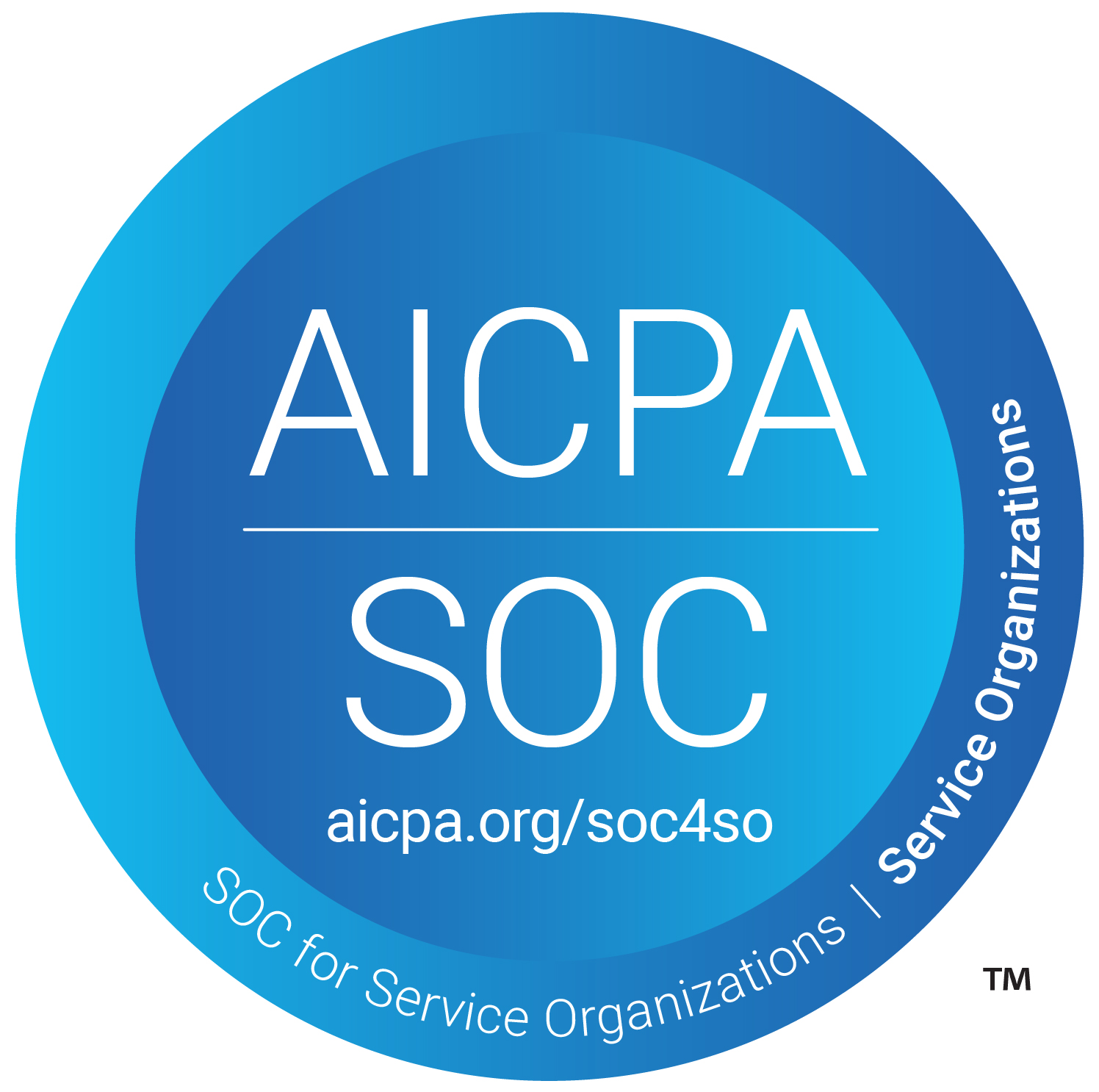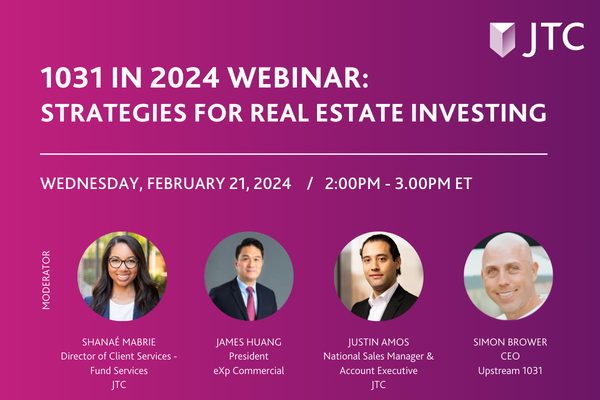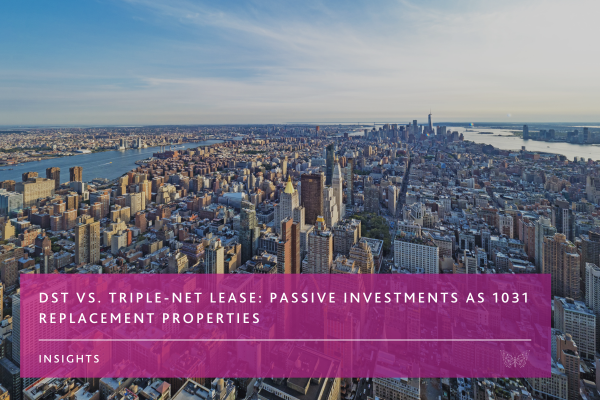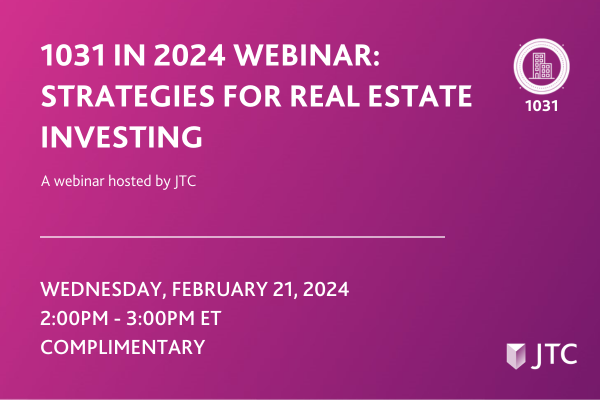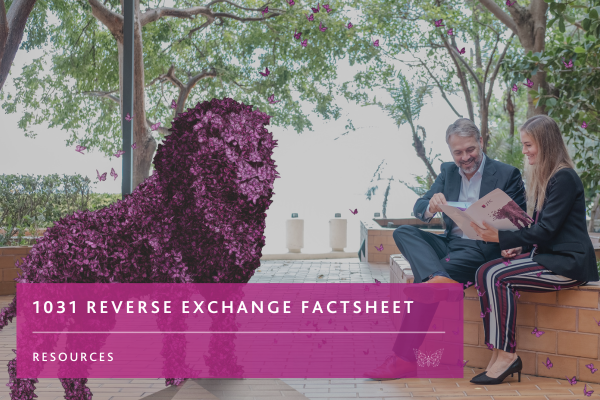While a forward 1031 exchange allows you to sell your investment property first and buy another one later, a reverse 1031 exchange does just the opposite. If you identify a property you want but still have not sold your existing one, you can conduct a reverse exchange — as long as you follow the IRS’s “safe harbor” guidance.
Because they are less common than 1031 forward exchanges, not every 1031 QI is experienced with reverse exchanges. So if you think a reverse 1031 exchange is the way to go for your business, make sure you choose a QI who can easily handle it.
JTC offers a experienced team of exchange specialists that have dealt with most 1031 exchange scenarios.
So, whether you decide to conduct a forward or reverse exchange, choose a 1031 exchange specialist who can help make sure everything goes as smoothly as possible.
Get in touch with a 1031 representative
What is a Reverse 1031 Exchange?
Section Reverse 1031 Exchanges enable taxpayers to structure a 1031 exchange when the Forward Exchange sequence of sell first, then buy is not feasible. While preserving the tax benefits of deferring gains on the sale of property, this solution allows greater flexibility to accommodate the business needs of the exchanger, typically through building improvements on, or leasing, the replacement property prior to the sale of the existing property in a Forward Exchange.
How is the Reverse 1031 Exchange different from the 1031 Forward Exchange?
While both processes allow an investor to defer paying capital gains taxes when selling a property, the sequence of events is different.
By exchanging first, the accommodator parks the relinquished property after acquiring it in the exchanger’s Forward Exchange. The accommodator holds the relinquished property until it can be sold to a buyer. The Parking Arrangement follows the Forward Exchange.
By exchanging last, the accommodator parks the replacement property and holds it until the relinquished property is sold. The accommodator then transfers the parked property to the exchanger as its replacement property. The Parking Arrangement precedes the Forward Exchange.
In both instances, the exchanger also enters into an exchange agreement with a QI to create the exchange using the sale of the relinquished property and the purchase of the replacement property.
How much time do I have to sell my property in exchange for the one I purchased?
You have 180 days to sell your current property.
During the first 45 days, you must identify what property is going to be sold as “the relinquished property.” After that, you have 135 days to close on the sale and complete the reverse 1031 exchange.
What is the ‘safe harbor’ Parking Arrangement?
The ‘safe harbor’ guidelines are a set of rules provided by the IRS to facilitate like-kind exchanges, such as the 1031 Reverse Exchange, including:
- An agreement must be entered into between the exchanger and an Exchange Accommodation Titleholder (EAT) within 5 days of the EAT taking title to the property to be parked
- The combined time frame that the relinquished property and the replacement property are held in a Parking Arrangement cannot exceed 180 days
- In an Exchange Last, identification of the relinquished property must be made no later than 45 days after the EAT acquires the title to the parked replacement property
For more information on Safe Harbor Reverse Exchange requirements, please read our guide for more details.
When should I choose a Reverse 1031 Exchange?
The Reverse 1031 Exchange is a more flexible transaction, allowing you to take advantage of a property investment opportunity immediately.
If you identify a property you want but still have not sold your existing one, you can conduct a reverse exchange — as long as you follow the IRS’s “safe harbor” guidance.
You will have 180 days to close on the sale and complete the Reverse Exchange transaction.
Who can handle my Reverse 1031 Exchange?
1031 QIs are the facilitators who conduct real estate exchanges. However, Reverse 1031 Exchanges are less common than Forward Exchanges, which is why you want to make sure that you choose a QI who has experience in facilitating tens of thousands of transactions.
JTC offers expertise and experience in conducting smooth and secure Reverse Exchanges, and works closely with clients and their advisers through every step of the exchange.
JTC offers an integrated solution by providing:
- A special purpose entity (such as an LLC) to act as the EAT and acquire title to the property to be parked
- A QI to serve as the exchange facilitator for the Forward Exchange
- Documentation for both the exchange and parking transactions
- Legal agreements for leasing or construction management
- A Qualified Escrow or Qualified Trust to hold the proceeds from the sale of the relinquished property, if necessary
- Assistance with timely notifications of parking and exchange deadlines
- Digital archiving of executed exchange documentation
- Our in-house attorneys, 1031 Exchange representatives and client services specialists have decades of experience in 1031 reverse exchanges, having closed thousands of successful transactions

